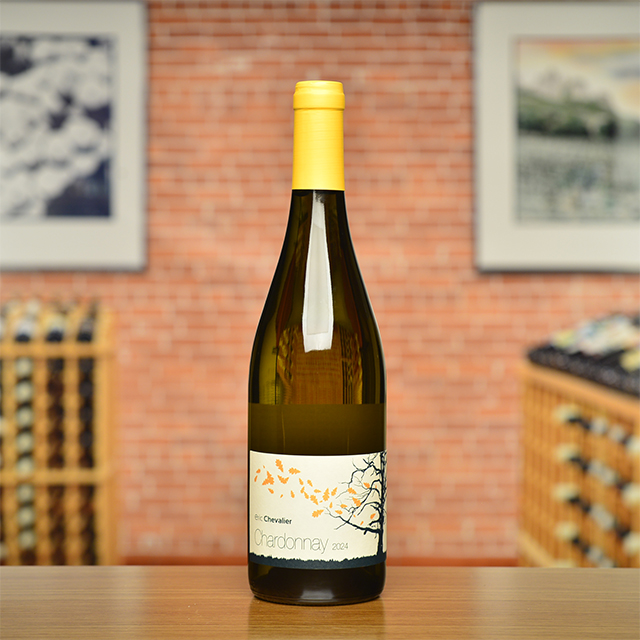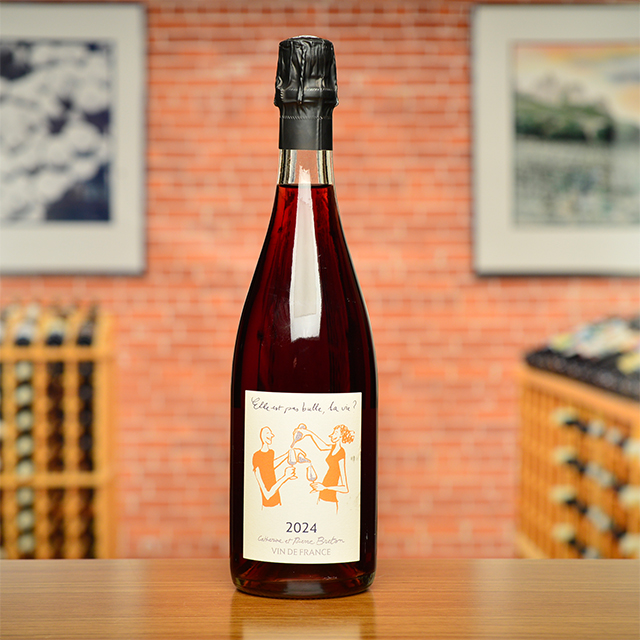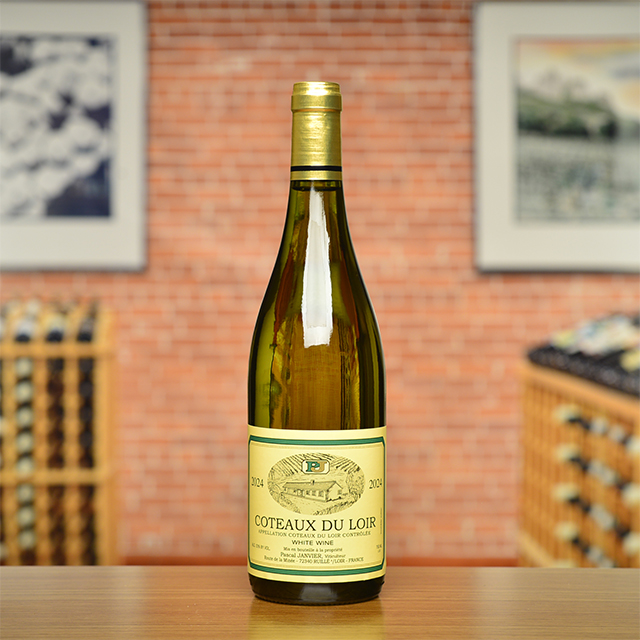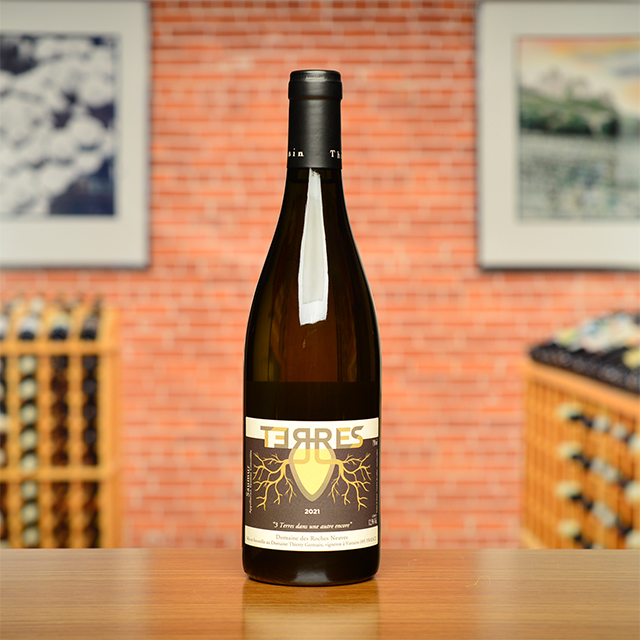Notify me
2016 Sancerre Rouge
Domaine Hippolyte Reverdy
If you have never tried a red wine from Sancerre, there is a likely explanation: only 10–20% of the wines from that appellation are red, even though the Sancerrois have been cultivating and vinifying Pinot Noir for centuries! In the late 1980s, Kermit asked Hippolyte’s son Michel to try aging his small amount of Sancerre rouge in the traditional demi-muids and bottling it unfiltered. Michel agreed to run this experiment with the cuvées we imported, but he continued to filter his Pinot Noir for other customers. Eventually those clients tasted our unfiltered cuvée and requested this style for themselves. So, in 2003, Michel finally decided to bottle all of his reds unfiltered. One whiff of this charming, Paris-bistro Pinot Noir from Sancerre and you know you’re not in Burgundy. Pure, classy fruit sing tenor without any interference from the earthy bass that often makes itself heard in Bourgogne rouge. This Pinot Noir is for pleasure and refreshment, not for pondering.
—Tom Wolf
| Wine Type: | red |
| Vintage: | 2016 |
| Bottle Size: | 750mL |
| Blend: | Pinot Noir |
| Appellation: | Sancerre |
| Country: | France |
| Region: | Loire |
| Producer: | Domaine Hippolyte Reverdy |
| Winemaker: | Michel Reverdy |
| Vineyard: | 30 years average, 3 ha |
| Soil: | Siliceous Clay, Gravelly limestone |
| Aging: | Wine is racked into 400-L barrels for the year, interrupted only by a natural malolactic fermentation in the Spring |
| Farming: | Lutte Raisonnée |
| Alcohol: | 12.5% |
More from this Producer or Region

2024 Chardonnay
France | Loire
Some wines deliver well beyond expectations—this is one of them.

2024 Vin de France Rosé Brut “Elle est pas bulle la vie?”
France | Loire
It’s refreshingly bright on the palate, flush with delicate notes of strawberry rhubarb, and dangerously quaffable.

2024 Coteaux du Loir Blanc
France | Loire
Exotically perfumed with hints of guava, musk, and clove, it finishes dry and quite flinty.

2021 Vin de France Blanc “Chenin Centenaire”
France | Loire
Fermented and aged in barrel and bottled unfiltered, it features a delightful kiss of oak on the long, bracing, mouth-watering finish.

2021 Saumur Blanc “Terres”
France | Loire
Redolent of almonds, honey, and a wide range of citrus, this kaleidoscopic Chenin finishes with a faint tannin, making it ideal alongside sushi, roast chicken, or a hard and flavorful cheese like Comté.

2024 Quincy
France | Loire
You’ll appreciate the distinctive flavor profile: born from warmer soils, it tastes of ripe, succulent citrus devoid of grassiness, while boasting the same flinty nerve as a good Sancerre.

2024 Reuilly Pinot Gris Rosé
France | Loire
Citrusy aromatics, bracing salinity, and a mineral backbone make it a mouthwatering match for tangy, herb-laden soups like tom kha gai.

2023 Savennières
France | Loire
Savennières is home to some of the greatest terroirs for this grape variety thanks to its soils of schist, sandstone, and blue slate and its proximity to the moderating Loire River.

2018 Saumur Blanc “L’Échelier”
France | Loire
Burgundian-like in character from its time spent in barrel, the laser-like acidity will become even more enticing with some age.

2024 Sancerre Rosé
France | Loire
Sancerre Rosé is made from Pinot Noir grown in Kimmeridgian limestone soil, and the Neveu family’s interpretation is fine, floral, crisp, and bone-dry.
 /
/
About The Producer
Domaine Hippolyte Reverdy
About The Region
Loire

The defining feature of the Loire Valley, not surprisingly, is the Loire River. As the longest river in France, spanning more than 600 miles, this river connects seemingly disparate wine regions. Why else would Sancerre, with its Kimmeridgian limestone terroir be connected to Muscadet, an appellation that is 250 miles away?
Secondary in relevance to the historical, climatic, environmental, and cultural importance of the river are the wines and châteaux of the Jardin de la France. The kings and nobility of France built many hundreds of châteaux in the Loire but wine preceded the arrival of the noblesse and has since out-lived them as well.
Diversity abounds in the Loire. The aforementioned Kimmeridgian limestone of Sancerre is also found in Chablis. Chinon, Bourgueil, and Saumur boast the presence of tuffeau, a type of limestone unique to the Loire that has a yellowish tinge and a chalky texture. Savennières has schist, while Muscadet has volcanic, granite, and serpentinite based soils. In addition to geologic diversity, many, grape varieties are grown there too: Cabernet Franc, Chenin Blanc, Sauvignon Blanc, and Melon de Bourgogne are most prevalent, but (to name a few) Pinot Gris, Grolleau, Pinot Noir, Pineau d’Aunis, and Folle Blanche are also planted. These myriad of viticultural influences leads to the high quality production of every type of wine: red, white, rosé, sparkling, and dessert.
Like the Rhône and Provence, some of Kermit’s first imports came from the Loire, most notably the wines of Charles Joguet and Château d’Epiré—two producers who are featured in Kermit’s book Adventures on the Wine Route and with whom we still work today.
More from Loire or France
2018 Saumur Blanc “L’Échelier”
Thierry Germain France | Loire
2020 Saumur Champigny “Clos de l’Échelier”
Thierry Germain France | Loire
2019 Vouvray “Bois Guyon”
Catherine & Pierre Breton France | Loire
2023 Bourgueil “Cuvée Alouettes”
Domaine de la Chanteleuserie France | Loire
2023 Chinon “Beaux Monts”
Catherine & Pierre Breton France | Loire
2021 Chinon “La Croix Boissée”
Bernard Baudry France | Loire
2023 Sancerre “Les Coutones”
Daniel Chotard France | Loire
2024 Jasnières
Pascal Janvier France | Loire
2023 Chinon “Le Domaine”
Bernard Baudry France | Loire
2021 Bourgueil “La Dilettante”
Catherine & Pierre Breton France | Loire
2024 Val de Loire Sauvignon Blanc “Unique”
Domaine du Salvard France | Loire
2024 Savennières “Cuvée Spéciale”
Château d’Epiré France | Loire
2018 Saumur Blanc “L’Échelier”
Thierry Germain France | Loire
2020 Saumur Champigny “Clos de l’Échelier”
Thierry Germain France | Loire
2019 Vouvray “Bois Guyon”
Catherine & Pierre Breton France | Loire
2023 Bourgueil “Cuvée Alouettes”
Domaine de la Chanteleuserie France | Loire
2023 Chinon “Beaux Monts”
Catherine & Pierre Breton France | Loire
2021 Chinon “La Croix Boissée”
Bernard Baudry France | Loire
2023 Sancerre “Les Coutones”
Daniel Chotard France | Loire
2024 Jasnières
Pascal Janvier France | Loire
2023 Chinon “Le Domaine”
Bernard Baudry France | Loire
2021 Bourgueil “La Dilettante”
Catherine & Pierre Breton France | Loire
2024 Val de Loire Sauvignon Blanc “Unique”
Domaine du Salvard France | Loire
2024 Savennières “Cuvée Spéciale”
Château d’Epiré France | Loire
Kermit once said...

Kermit once said...
If you're looking for value, look where no one else is looking.
Inspiring Thirst, page 211














